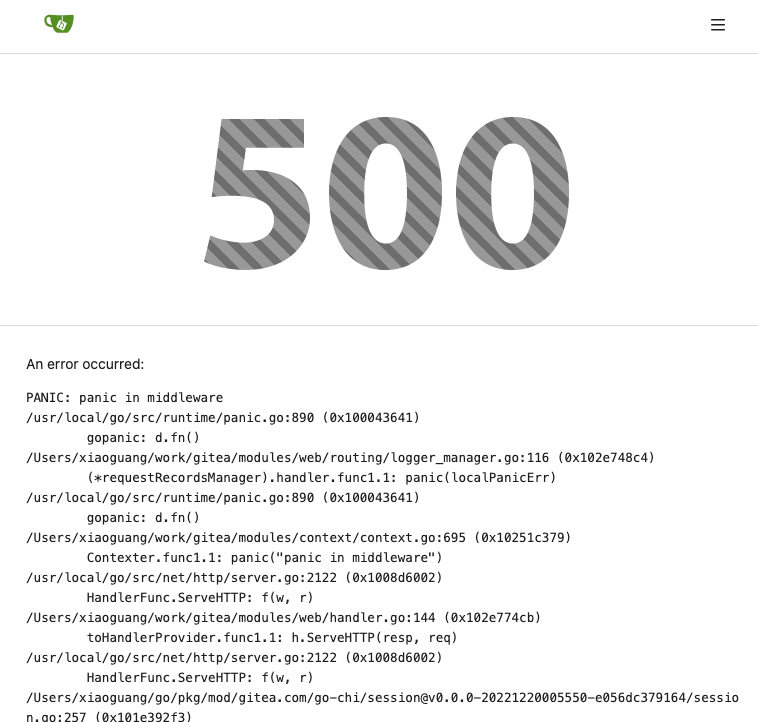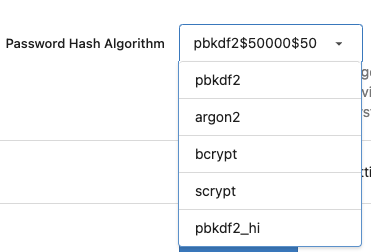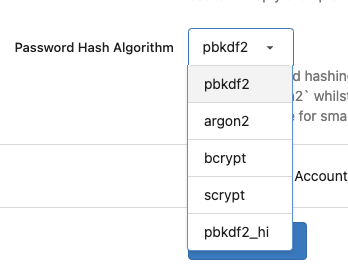Replaces `Gitea` with `Forgejo` in the default config settings for new installs.
This will not affect existing installs.
Co-authored-by: Caesar Schinas <caesar@caesarschinas.com>
Reviewed-on: https://codeberg.org/forgejo/forgejo/pulls/140
Co-authored-by: Caesar Schinas <caesar@noreply.codeberg.org>
Co-committed-by: Caesar Schinas <caesar@noreply.codeberg.org>
(cherry picked from commit ca1319aa16)
(cherry picked from commit 52a4d238a0)
(cherry picked from commit f63536538c)
Conflicts:
web_src/js/features/install.js
(cherry picked from commit 861cc434e1)
(cherry picked from commit 0e6ea60c80)
(cherry picked from commit 0cbc0ec15d)
(cherry picked from commit 3cc19b0ae2)
(cherry picked from commit 50fcb885fe)
(cherry picked from commit f6039d4df4)
(cherry picked from commit 5ae5c6ba2d)
(cherry picked from commit f0b565e0ed)
(cherry picked from commit adbd4d2015)
(cherry picked from commit d26c540ffd)
(cherry picked from commit 6df6781b42)
(cherry picked from commit b6fb56e1c4)
The INI package has many bugs and quirks, and in fact it is
unmaintained.
This PR is the first step for the INI package refactoring:
* Use Gitea's "config_provider" to provide INI access
* Deprecate the INI package by golangci.yml rule
Fix #24856
Rename "context.contextKey" to "context.WebContextKey", this context is
for web context only. But the Context itself is not renamed, otherwise
it would cause a lot of changes (if we really want to rename it, there
could be a separate PR).
The old test code doesn't really test, the "install page" gets broken
not only one time, so use new test code to make sure the "install page"
could work.
Replace #16455
Close #21803
Mixing different Gitea contexts together causes some problems:
1. Unable to respond proper content when error occurs, eg: Web should
respond HTML while API should respond JSON
2. Unclear dependency, eg: it's unclear when Context is used in
APIContext, which fields should be initialized, which methods are
necessary.
To make things clear, this PR introduces a Base context, it only
provides basic Req/Resp/Data features.
This PR mainly moves code. There are still many legacy problems and
TODOs in code, leave unrelated changes to future PRs.
Partially for #24457
Major changes:
1. The old `signedUserNameStringPointerKey` is quite hacky, use
`ctx.Data[SignedUser]` instead
2. Move duplicate code from `Contexter` to `CommonTemplateContextData`
3. Remove incorrect copying&pasting code `ctx.Data["Err_Password"] =
true` in API handlers
4. Use one unique `RenderPanicErrorPage` for panic error page rendering
5. Move `stripSlashesMiddleware` to be the first middleware
6. Install global panic recovery handler, it works for both `install`
and `web`
7. Make `500.tmpl` only depend minimal template functions/variables,
avoid triggering new panics
Screenshot:
<details>

</details>
The old `HTMLRender` is not ideal.
1. It shouldn't be initialized multiple times, it consumes a lot of
memory and is slow.
2. It shouldn't depend on short-lived requests, the `WatchLocalChanges`
needs a long-running context.
3. It doesn't make sense to use FuncsMap slice.
HTMLRender was designed to only work for GItea's specialized 400+
templates, so it's good to make it a global shared instance.
The old code is unnecessarily complex, and has many misuses.
Old code "wraps" a lot, wrap wrap wrap, it's difficult to understand
which kind of handler is used.
The new code uses a general approach, we do not need to write all kinds
of handlers into the "wrapper", do not need to wrap them again and
again.
New code, there are only 2 concepts:
1. HandlerProvider: `func (h any) (handlerProvider func (next)
http.Handler)`, it can be used as middleware
2. Use HandlerProvider to get the final HandlerFunc, and use it for
`r.Get()`
And we can decouple the route package from context package (see the
TODO).
# FAQ
## Is `reflect` safe?
Yes, all handlers are checked during startup, see the `preCheckHandler`
comment. If any handler is wrong, developers could know it in the first
time.
## Does `reflect` affect performance?
No. https://github.com/go-gitea/gitea/pull/24080#discussion_r1164825901
1. This reflect code only runs for each web handler call, handler is far
more slower: 10ms-50ms
2. The reflect is pretty fast (comparing to other code): 0.000265ms
3. XORM has more reflect operations already
Close #24062
At the beginning, I just wanted to fix the warning mentioned by #24062
But, the cookie code really doesn't look good to me, so clean up them.
Complete the TODO on `SetCookie`:
> TODO: Copied from gitea.com/macaron/macaron and should be improved
after macaron removed.
The idea is to use a Layered Asset File-system (modules/assetfs/layered.go)
For example: when there are 2 layers: "custom", "builtin", when access
to asset "my/page.tmpl", the Layered Asset File-system will first try to
use "custom" assets, if not found, then use "builtin" assets.
This approach will hugely simplify a lot of code, make them testable.
Other changes:
* Simplify the AssetsHandlerFunc code
* Simplify the `gitea embedded` sub-command code
---------
Co-authored-by: Jason Song <i@wolfogre.com>
Co-authored-by: Lunny Xiao <xiaolunwen@gmail.com>
Replace #23350.
Refactor `setting.Database.UseMySQL` to
`setting.Database.Type.IsMySQL()`.
To avoid mismatching between `Type` and `UseXXX`.
This refactor can fix the bug mentioned in #23350, so it should be
backported.
## TLDR
* Fix the broken page / broken image problem when click "Install"
* Close #20089
* Fix the Password Hash Algorithm display problem for #22942
* Close #23183
* Close #23184
## Details
### The broken page / broken image problem when click "Install"
(Redirect failed after install gitea #23184)
Before: when click "install", all new requests will fail, because the
server has been restarted. Users just see a broken page with broken
images, sometimes the server is not ready but the user would have been
redirect to "/user/login" page, then the users see a new broken page
(connection refused or something wrong ...)
After: only check InstallLock=true for necessary handlers, and sleep for
a while before restarting the server, then the browser has enough time
to load the "post-install" page. And there is a script to check whether
"/user/login" is ready, the user will only be redirected to the login
page when the server is ready.
### During new instance setup make 'Gitea Base URL' filled from
window.location.origin #20089
If the "app_url" input contains `localhost` (the default value from
config), use current window's location href as the `app_url` (aka
ROOT_URL)
### Fix the Password Hash Algorithm display problem for "Provide the
ability to set password hash algorithm parameters #22942"
Before: the UI shows `pbkdf2$50000$50`
<details>

</details>
After: the UI shows `pbkdf2`
<details>

</details>
### GET data: net::ERR_INVALID_URL #23183
Cause by empty `data:` in `<link rel="manifest"
href="data:{{.ManifestData}}">`
---------
Co-authored-by: Jason Song <i@wolfogre.com>
Co-authored-by: Lunny Xiao <xiaolunwen@gmail.com>
Co-authored-by: techknowlogick <techknowlogick@gitea.io>
Some bugs caused by less unit tests in fundamental packages. This PR
refactor `setting` package so that create a unit test will be easier
than before.
- All `LoadFromXXX` files has been splited as two functions, one is
`InitProviderFromXXX` and `LoadCommonSettings`. The first functions will
only include the code to create or new a ini file. The second function
will load common settings.
- It also renames all functions in setting from `newXXXService` to
`loadXXXSetting` or `loadXXXFrom` to make the function name less
confusing.
- Move `XORMLog` to `SQLLog` because it's a better name for that.
Maybe we should finally move these `loadXXXSetting` into the `XXXInit`
function? Any idea?
---------
Co-authored-by: 6543 <6543@obermui.de>
Co-authored-by: delvh <dev.lh@web.de>
This PR refactors and improves the password hashing code within gitea
and makes it possible for server administrators to set the password
hashing parameters
In addition it takes the opportunity to adjust the settings for `pbkdf2`
in order to make the hashing a little stronger.
The majority of this work was inspired by PR #14751 and I would like to
thank @boppy for their work on this.
Thanks to @gusted for the suggestion to adjust the `pbkdf2` hashing
parameters.
Close #14751
---------
Signed-off-by: Andrew Thornton <art27@cantab.net>
Co-authored-by: delvh <dev.lh@web.de>
Co-authored-by: John Olheiser <john.olheiser@gmail.com>
Co-authored-by: Lunny Xiao <xiaolunwen@gmail.com>
To avoid duplicated load of the same data in an HTTP request, we can set
a context cache to do that. i.e. Some pages may load a user from a
database with the same id in different areas on the same page. But the
code is hidden in two different deep logic. How should we share the
user? As a result of this PR, now if both entry functions accept
`context.Context` as the first parameter and we just need to refactor
`GetUserByID` to reuse the user from the context cache. Then it will not
be loaded twice on an HTTP request.
But of course, sometimes we would like to reload an object from the
database, that's why `RemoveContextData` is also exposed.
The core context cache is here. It defines a new context
```go
type cacheContext struct {
ctx context.Context
data map[any]map[any]any
lock sync.RWMutex
}
var cacheContextKey = struct{}{}
func WithCacheContext(ctx context.Context) context.Context {
return context.WithValue(ctx, cacheContextKey, &cacheContext{
ctx: ctx,
data: make(map[any]map[any]any),
})
}
```
Then you can use the below 4 methods to read/write/del the data within
the same context.
```go
func GetContextData(ctx context.Context, tp, key any) any
func SetContextData(ctx context.Context, tp, key, value any)
func RemoveContextData(ctx context.Context, tp, key any)
func GetWithContextCache[T any](ctx context.Context, cacheGroupKey string, cacheTargetID any, f func() (T, error)) (T, error)
```
Then let's take a look at how `system.GetString` implement it.
```go
func GetSetting(ctx context.Context, key string) (string, error) {
return cache.GetWithContextCache(ctx, contextCacheKey, key, func() (string, error) {
return cache.GetString(genSettingCacheKey(key), func() (string, error) {
res, err := GetSettingNoCache(ctx, key)
if err != nil {
return "", err
}
return res.SettingValue, nil
})
})
}
```
First, it will check if context data include the setting object with the
key. If not, it will query from the global cache which may be memory or
a Redis cache. If not, it will get the object from the database. In the
end, if the object gets from the global cache or database, it will be
set into the context cache.
An object stored in the context cache will only be destroyed after the
context disappeared.
Change all license headers to comply with REUSE specification.
Fix #16132
Co-authored-by: flynnnnnnnnnn <flynnnnnnnnnn@github>
Co-authored-by: John Olheiser <john.olheiser@gmail.com>
Fix https://github.com/go-gitea/gitea/issues/21666
Caused by https://github.com/go-gitea/gitea/pull/19663
Before: when install, the INTERNAL_TOKEN was always generated and saved.
But the internal token may be already there by INTERNAL_TOKEN_URI
After: INTERNAL_TOKEN_URI file must be non-empty. When install, skip
internal token generation if the token exists.
The recovery, API, Web and package frameworks all create their own HTML
Renderers. This increases the memory requirements of Gitea
unnecessarily with duplicate templates being kept in memory.
Further the reloading framework in dev mode for these involves locking
and recompiling all of the templates on each load. This will potentially
hide concurrency issues and it is inefficient.
This PR stores the templates renderer in the context and stores this
context in the NormalRoutes, it then creates a fsnotify.Watcher
framework to watch files.
The watching framework is then extended to the mailer templates which
were previously not being reloaded in dev.
Then the locales are simplified to a similar structure.
Fix #20210
Fix #20211
Fix #20217
Signed-off-by: Andrew Thornton <art27@cantab.net>
* `PROTOCOL`: can be smtp, smtps, smtp+startls, smtp+unix, sendmail, dummy
* `SMTP_ADDR`: domain for SMTP, or path to unix socket
* `SMTP_PORT`: port for SMTP; defaults to 25 for `smtp`, 465 for `smtps`, and 587 for `smtp+startls`
* `ENABLE_HELO`, `HELO_HOSTNAME`: reverse `DISABLE_HELO` to `ENABLE_HELO`; default to false + system hostname
* `FORCE_TRUST_SERVER_CERT`: replace the unclear `SKIP_VERIFY`
* `CLIENT_CERT_FILE`, `CLIENT_KEY_FILE`, `USE_CLIENT_CERT`: clarify client certificates here
Co-authored-by: wxiaoguang <wxiaoguang@gmail.com>
Co-authored-by: Lunny Xiao <xiaolunwen@gmail.com>
`no-transform` allegedly disables CloudFlare auto-minify and we did not
set caching headers on html or api requests, which seems good to have
regardless.
Transformation is still allowed for asset requests.
Signed-off-by: Andrew Thornton <art27@cantab.net>
Co-authored-by: wxiaoguang <wxiaoguang@gmail.com>
Co-authored-by: Andrew Thornton <art27@cantab.net>
* Refactor `i18n` to `locale`
- Currently we're using the `i18n` variable naming for the `locale`
struct. This contains locale's specific information and cannot be used
for general i18n purpose, therefore refactoring it to `locale` makes
more sense.
- Ref: https://github.com/go-gitea/gitea/pull/20096#discussion_r906699200
* Update routers/install/install.go
* chore: add health check endpoint
docs: update document about health check
fix: fix up Sqlite3 ping. current ping will success even if the db file is missing
fix: do not expose privacy information in output field
* refactor: remove HealthChecker struct
* Added `/api/healthz` to install routes.
This was needed for using /api/healthz endpoint in Docker healthchecks,
otherwise, Docker would never become healthy if using healthz endpoint
and users would not be able to complete the installation of Gitea.
* Update modules/cache/cache.go
* fine tune
* Remove unnecessary test code. Now there are 2 routes for installation (and maybe more in future)
Co-authored-by: Lunny Xiao <xiaolunwen@gmail.com>
Co-authored-by: wxiaoguang <wxiaoguang@gmail.com>
Co-authored-by: 6543 <6543@obermui.de>
Co-authored-by: Marcos de Oliveira <marcossantos@furb.br>
* Apply DefaultUserIsRestricted in CreateUser
* Enforce system defaults in CreateUser
Allow for overwrites with CreateUserOverwriteOptions
* Fix compilation errors
* Add "restricted" option to create user command
* Add "restricted" option to create user admin api
* Respect default setting.Service.RegisterEmailConfirm and setting.Service.RegisterManualConfirm where needed
* Revert "Respect default setting.Service.RegisterEmailConfirm and setting.Service.RegisterManualConfirm where needed"
This reverts commit ee95d3e8dc.
Skip `checkAppUrl` message on installation page because the ROOT_URL is not determined yet
Move global var `supportedDbTypeNames` into `install.Init` as a local var
* remove unnecessary web context data fields, and unify the i18n/translation related functions to `Locale`
* in development, show an error if a translation key is missing
* remove the unnecessary loops `for _, lang := range translation.AllLangs()` for every request, which improves the performance slightly
* use `ctx.Locale.Language()` instead of `ctx.Data["Lang"].(string)`
* add more comments about how the Locale/LangType fields are used
* Switch to non-deprecation setting
(Avoid by-default: "Deprecated fallback `[server]` `LFS_CONTENT_PATH` present. Use `[lfs]` `PATH` instead. This fallback will be removed in v1.18.0")
* Update all references
Make router logger more friendly, show the related function name/file/line.
[BREAKING]
This PR substantially changes the logging format of the router logger. If you use this logging for monitoring e.g. fail2ban you will need to update this to match the new format.
* Refactor install page (db type)
* set correct default DB HOST for different DB TYPE
* remove legacy TiDB from documents
* unify the usage of DB TYPE, in code we only use "mysql". "MySQL" is only shown to users for friendly name.
* Gitea can use TiDB via MySQL protocol
Co-authored-by: zeripath <art27@cantab.net>
Co-authored-by: Lunny Xiao <xiaolunwen@gmail.com>
* Improve install code to avoid low-level mistakes.
If a user tries to do a re-install in a Gitea database, they gets a warning and double check.
When Gitea runs, it never create empty app.ini automatically.
Also some small (related) refactoring:
* Refactor db.InitEngine related logic make it more clean (especially for the install code)
* Move some i18n strings out from setting.go to make the setting.go can be easily maintained.
* Show errors in CLI code if an incorrect app.ini is used.
* APP_DATA_PATH is created when installing, and checked when starting (no empty directory is created any more).
* Run Migrate in Install rather than just SyncTables
The underlying problem in #17328 appears to be that users are re-running the install
page during upgrades. The function that tests and creates the db did not intend for
this and thus instead the migration scripts being run - a simple sync tables occurs.
This then causes a weird partially migrated DB which causes, in this release cycle,
the duplicate column in task table error. It is likely the cause of some weird
partial migration errors in other cycles too.
This PR simply ensures that the migration scripts are also run at this point too.
Fix #17328
Signed-off-by: Andrew Thornton <art27@cantab.net>
Often when handling problems it is not clear which configuration file Gitea is
using. This PR simply ensures that the configuration file is emitted.
Signed-off-by: Andrew Thornton <art27@cantab.net>